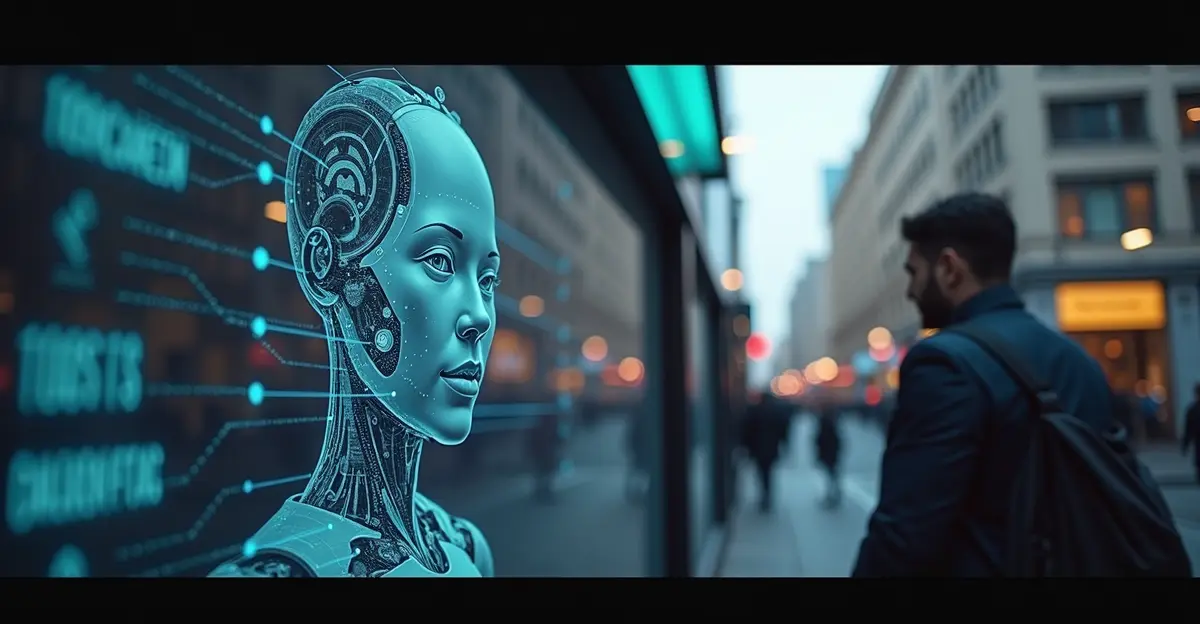Major tech companies and media organizations are adopting AI content watermarking standards like C2PA and Google's SynthID to combat misinformation. The industry roadmap includes detection tools, phased publisher adoption, and regulatory compliance driving market growth.

Industry Unites Behind AI Content Watermarking Standards
Major technology companies and media organizations are rallying behind new standards for watermarking AI-generated content, creating a unified approach to combat misinformation and establish digital trust. The initiative combines technical detection tools with comprehensive adoption roadmaps that could fundamentally change how we verify online content.
The Technical Foundation: C2PA and SynthID
The Coalition for Content Provenance and Authenticity (C2PA) has emerged as the leading standard for content authentication. Founded by Adobe, The New York Times, and Twitter in 2019, C2PA creates tamper-evident metadata that tracks content origin and editing history. 'We're moving from theoretical standards to practical implementation,' says Sarah Johnson, a spokesperson for the Content Authenticity Initiative. 'The 2025 Content Authenticity Summit marked a turning point where we saw real adoption across newsrooms and creative industries.'
Complementing C2PA, Google's SynthID technology provides invisible watermarking that remains detectable even after content modifications. 'SynthID embeds imperceptible watermarks across text, images, audio, and video without affecting quality,' explains Dr. Michael Chen, Google's AI Ethics Lead. 'Our detector portal has already scanned over 10 billion pieces of content, and we're expanding partnerships with companies like NVIDIA for video watermarking.'
Publisher Adoption Roadmap
Major media organizations are implementing phased adoption strategies. The roadmap begins with internal testing, moves to limited public deployment, and culminates in full integration across all content channels. 'We're starting with our breaking news division and expanding to all departments by Q3 2025,' says Maria Rodriguez, Digital Innovation Director at a major news network. 'The key is balancing security with workflow efficiency.'
The adoption process involves three key phases: content creation tools integration, staff training programs, and public verification interfaces. Publishers are working with technology partners to embed watermarking directly into content management systems and social media publishing tools.
Detection Tools and Verification Systems
New detection platforms are emerging to help users verify content authenticity. Google's SynthID Detector, initially available to journalists and researchers, can identify watermarks across multiple content types. The system highlights specific portions where watermarks are detected, providing granular verification capabilities.
'The ability to pinpoint watermarked segments in audio and specific areas in images represents a significant advancement,' notes cybersecurity expert Dr. Emily Watson. 'This granular detection makes it much harder for bad actors to manipulate content without detection.'
Regulatory Drivers and Market Growth
The push for watermarking standards is accelerated by regulatory requirements. The EU AI Act mandates disclosure of AI-generated content, while similar regulations are emerging globally. The AI watermarking market is projected to reach USD 2.37 billion by 2032, growing at a 23.6% CAGR from 2025-2032.
'Regulatory pressure is driving rapid adoption,' says industry analyst James Peterson. 'Companies that implement these standards early will have a competitive advantage in building trust with their audiences.'
Implementation Challenges and Solutions
Despite the momentum, implementation faces challenges including privacy concerns, interoperability issues, and the need for public education. The C2PA community is addressing these through the upcoming Conformance Program, which will ensure consistent implementation across platforms.
'Privacy is a legitimate concern,' acknowledges privacy advocate Lisa Thompson. 'We need to ensure that watermarking doesn't compromise user privacy while still providing effective content verification.'
Technical innovations are also addressing robustness concerns. Recent breakthroughs include GaussianSeal for 3D content watermarking and Multi-Bit Paraphrasing for text, achieving detection accuracy rates exceeding 99.99%.
Future Outlook
The industry is moving toward a future where content authenticity becomes a standard feature rather than an optional add-on. As more platforms integrate these technologies, users will increasingly expect verifiable content across all digital channels.
'This isn't just about technology - it's about rebuilding trust in digital information,' concludes Dr. Chen. 'When implemented correctly, these standards can help restore confidence in online content while supporting creative innovation.'

 Nederlands
Nederlands
 English
English
 Deutsch
Deutsch
 Français
Français
 Español
Español
 Português
Português









